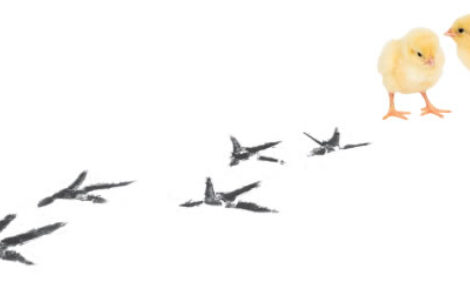



Influence of Enclosure Size on Growth of Breast and Leg Muscle Fibres in Domestic Fowl
Bodyweight gain was greater for broilers raised to 42 days with more space but other performance measures were unaffected, according to new research from Sao Paulo University in Brazil. The researchers found that space allowance for older birds affected hypertrophic growth and metabolic characteristics of breast and leg muscle fibres.In a recent issue of International Journal of Poultry Science, Michaela F.R. Alves and colleagues at Brazil's São Paulo State University report at experiment to evaluate the growth of breast and leg muscle fibres of domestic fowl raised in two enclosure sizes (SE = Small Enclosure, 1.125 square metres for 10 birds; or LE: Large Enclosure, 5.25 square metres per 10 birds).
In breast muscle, the number of fibres per area decreased over time and higher values were observed in broilers housed in SE compared to LE.
Fibre size increased with age and was greater in LE than SE at 56 days of age, suggesting greater hypertrophic growth of fibres in breast muscle for broilers maintained in LE.
In leg muscle, the muscle cross-sectional area was greater for broilers raised in LE than SE at 56 days of age and decreased from 42 to 56 days of age in broilers raised in SE, suggesting leg muscle atrophy in these birds.
The Fast Glycolytic (FG), Fast Oxidative-Glycolytic (FOG) and Slow Oxidative (SO) fibres grew until 42 days of age in both enclosure sizes. The area of FOG fibres was greater in broilers raised in LE than those in SE at 28 and 56 days of age; in LE-raised broilers, the SO area was greater at 28, 42 and 56 days of age, suggesting that the muscles of broilers housed in LE are more oxidative.
Bodyweight gain was greater for broilers raised in LE than SE, whereas bodyweight, feed intake and feed conversion were not influenced by
enclosure size.
Thus, enclosure space affected hypertrophic growth and metabolic characteristics of breast and leg muscle fibres, concluded Alves and her colleagues.
They said their experiment showed that the enclosure size influenced the breast and leg muscle fibre growth in broilers, resulting in atrophy of the leg muscles from birds raised in a small enclosure after 42 days of age. In practice, the results indicated that confinement did not
affect muscle development up to slaughter (42 days of age). They added that more research on muscle growth should be performed as a tool to measure animal welfare during long periods of confinement.
Reference
Alves M.F.R., F.R. Abe and I.C. Boleli. 2012. Influence of enclosure size on growth of breast and leg muscle fibers in domestic fowl. International Journal of Poultry Science, 11(5):361-367.
Further ReadingYou can view the full report by clicking here. |
September 2012








